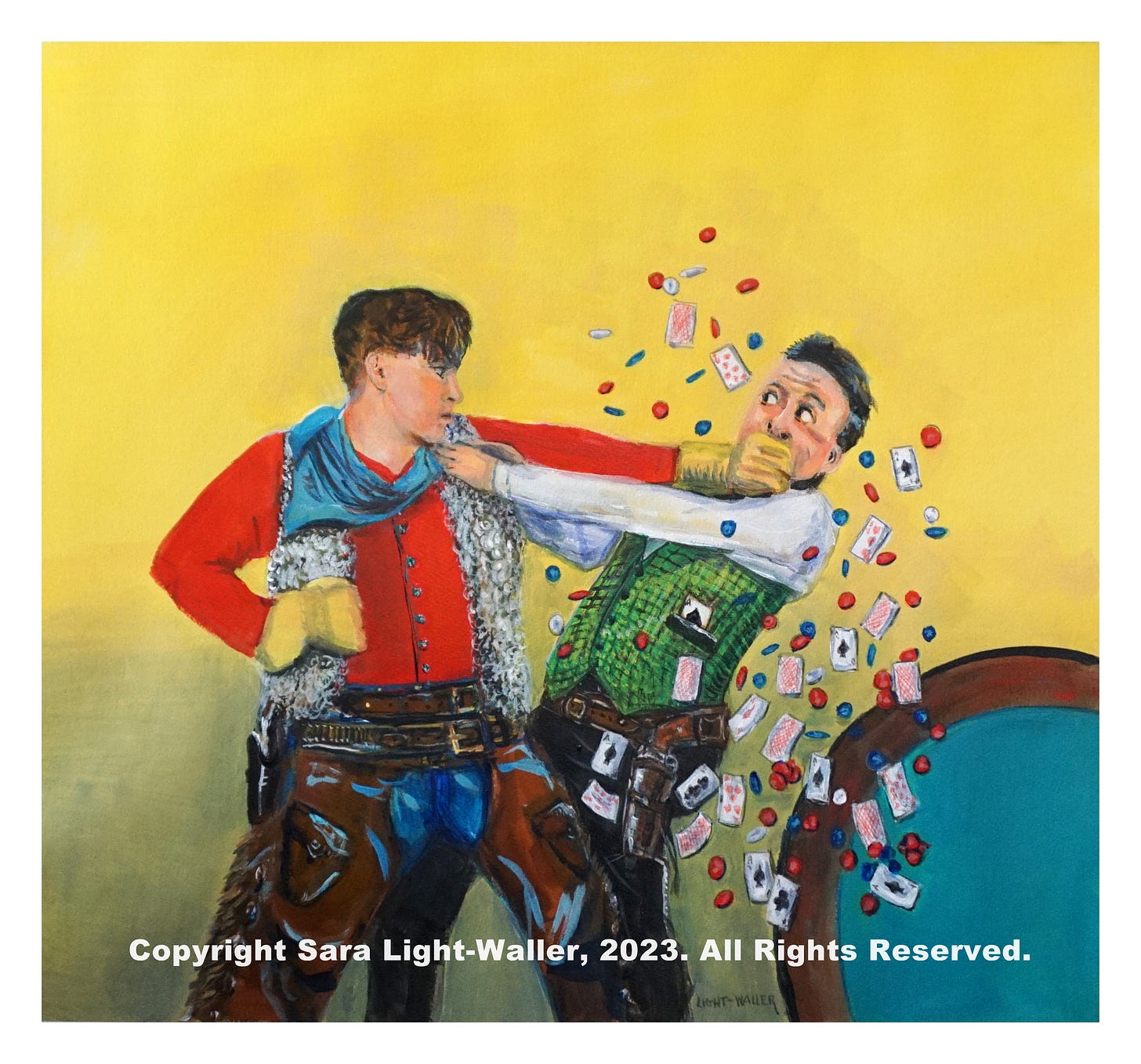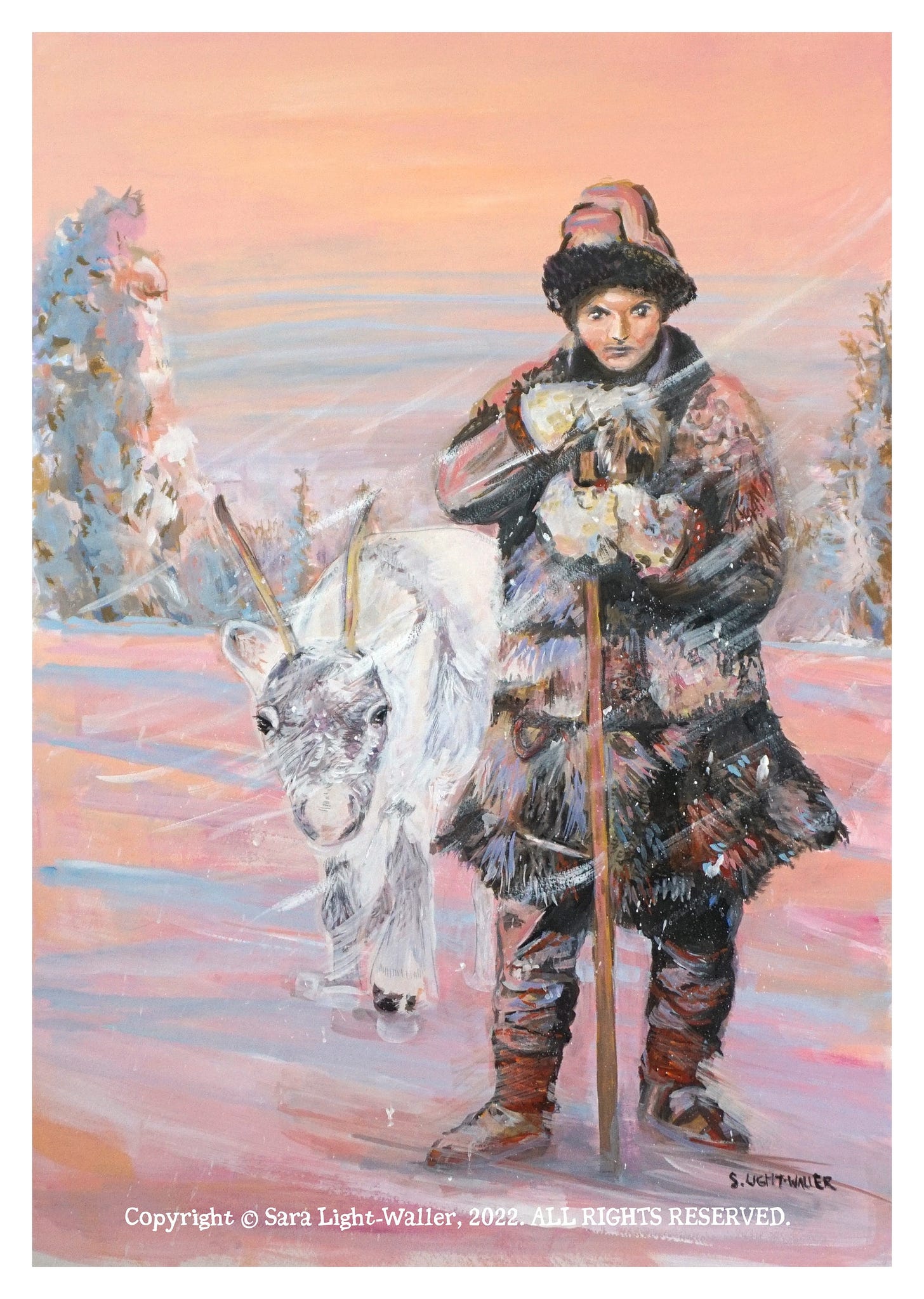For the past several years I have been doing a deep dive into the art of the pulp era (1920’s-early 1950’s). I love the art seen on pulp magazine covers and wanted to honestly re-create the look and feel of it for my own books. This required a disciplined approach. I started by looking at a lot of pictures in a lot of different pulp genres. Then I studied the color palettes and found they shifted over time. Next, I looked at the types of painting strokes typically used in those days which are much broader than we tend to use in our photo-realistic art today. There was also the issue of the using period-looking people, clothing, and props. And finally, understanding how to create melodramatic storytelling action. It was all a lot to consider but I have devoted myself to the task.
One of my favorite study techniques is to create copies of the old pulp covers. These are never for sale, they are merely study tools. Once in a blue moon I will sell one of my copies if the original artist was uncredited. Otherwise, no.
Much of the art created for pulp covers was made in oil paints. I don’t use oils myself as my small studio has nowhere to put the wet canvases. Instead, I use a variety of faster drying techniques: watercolor, gouache, casein, and acrylics. I will also use colored pencils, colored inks, and even art crayons to get a close approximation.
Here is my newest pulp copy of “The Shadow” magazine featuring “Hidden Death” (September, 1932 issue.) The original artwork was by George Rozen (1895-1973). George Rozen is one of my favorite pulp artists. I chose colored pencils and toned paper for this copy.

Here are a few other pulp copies I’ve created using George Rozen’s art as my inspiration.


Here are a few examples of my original pulp paintings.
My work has been seen on book and magazine covers, interior book and magazine art, and in private collections. But there is always more to learn and do as I continue my journey as a pulp artist.
This is the Rocketeer signing off for today.







Excellent work! Very talented!